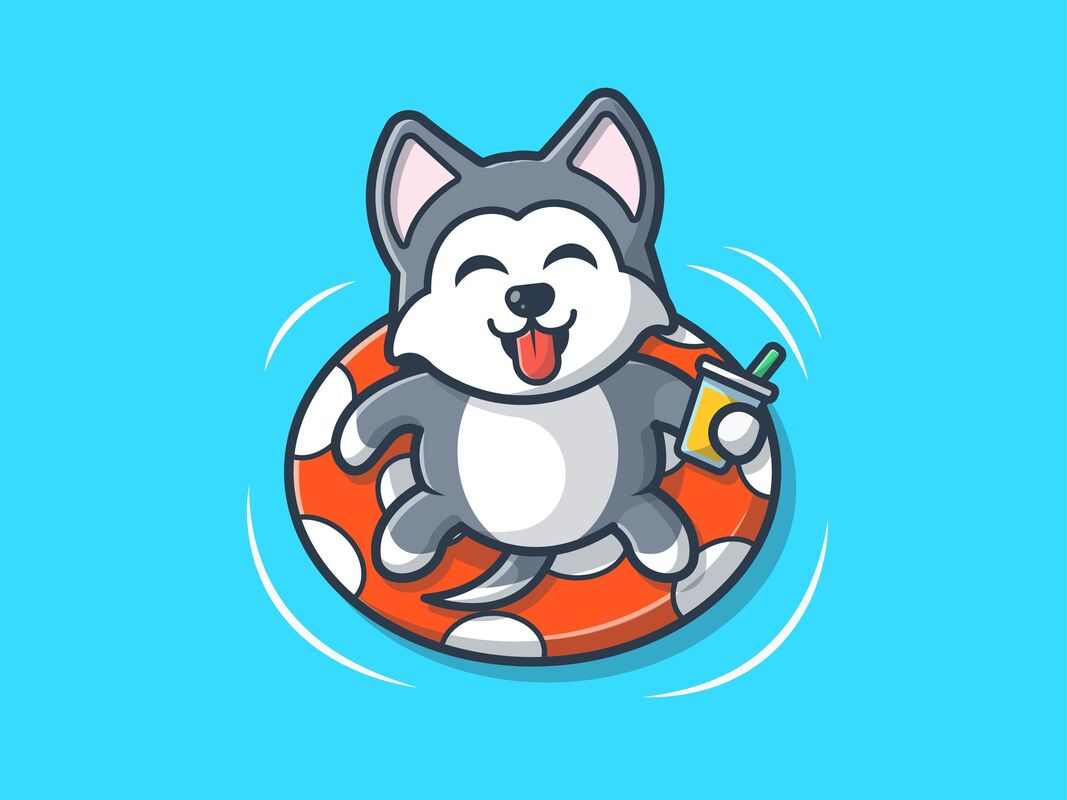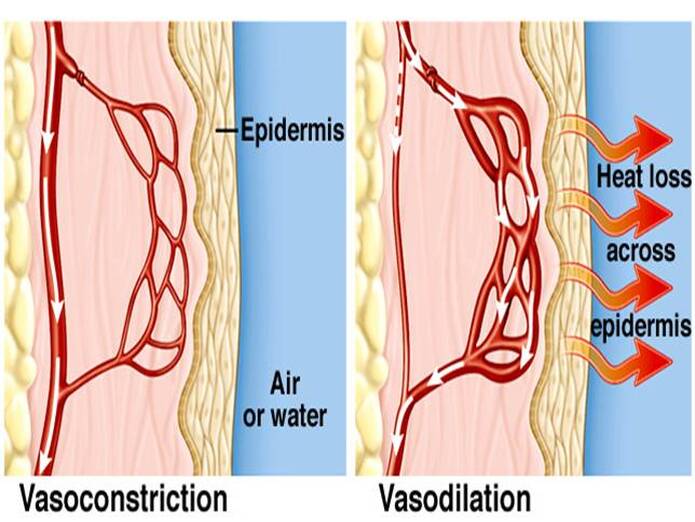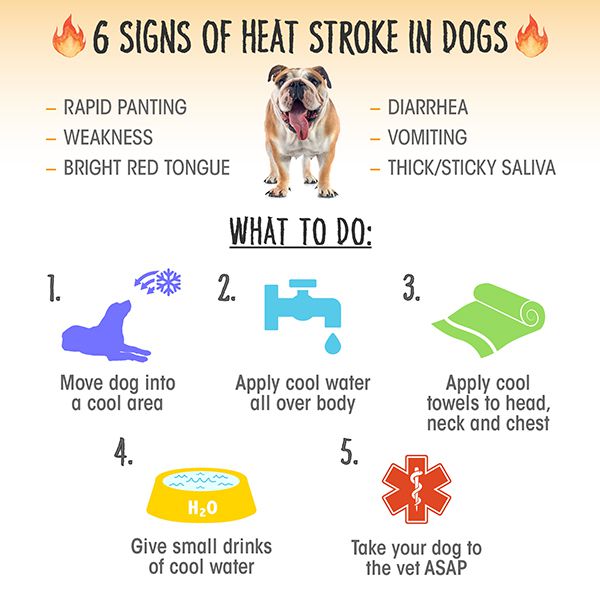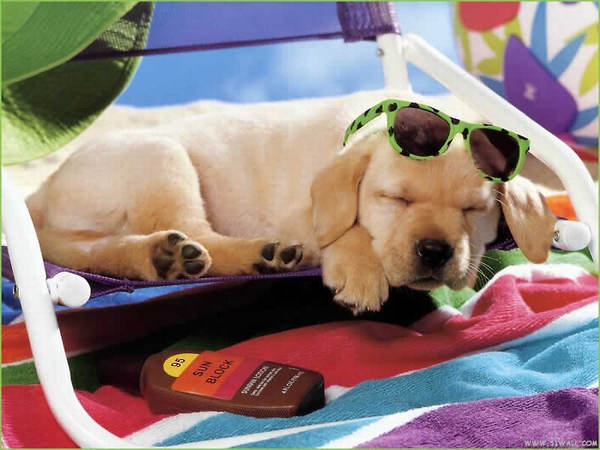|
As heat waves spread across the state, and temperatures reach well into the 100's, it is important to keep yourself safe. But how often do we think about our pets in this weather? Our dogs and cats do not have the benefit of being able to take their fur off when it gets too hot like we can do with our clothes, so it's time to talk about how they keep cool! This post will cover how our pets stay cool (for dogs and cats), some symptoms of various heat related issues, as well as what you can do to help your pet. As the sun shines and temperatures rise, our pets figure out how to stay cool the best they can. Both dogs and cats will move to cooler spots where shade or grass is abundant, as well as physiologically changing their bodies to stay cooler. Dogs will typically pant to stay cool, while cats typically groom themselves more frequently. 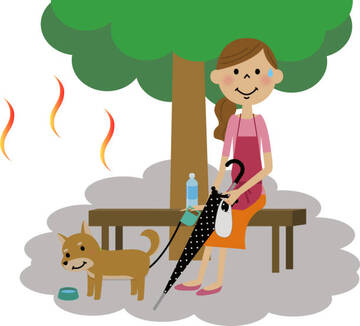 Our pets can figure out where shade is, as that is preferable to the sun when it is hot outside. They also prefer grassy areas rather than concrete, so the ground doesn't burn their paw pads. If you are walking your pet, even in the evening when it might feel cooler, make sure to check the concrete by putting your hand on the concrete and keeping it there for 5 seconds. If it feels too hot, then it is too hot for your dog! Imagine walking on the hot concrete bare-footed for 20 minutes rather than 5 seconds if it feels too hot. It could get uncomfortable and potentially cause a burn on their paw pads, which can lead to worse problems if not treated. Never underestimate the power of waiting an hour when it comes to taking your dog on a walk to avoid the heat. The physiology involved in keeping cool is actually very interesting! In times of hot weather, the blood vessels will actually dilate to help direct the blood more towards the skin. By directing the blood more towards the outside surface, the blood gives off heat which travels through the skin and is emitted outside the body. Heat that gets emitted outside the body does not get circulated back into the system, so the pet cools down. This is why our pets (and us too!) appear red on their skin when it is very hot outside. It is a sign that the body is doing everything it can to get rid of heat, and that should be a sign to get your pet to a cooler area with water and shade available. 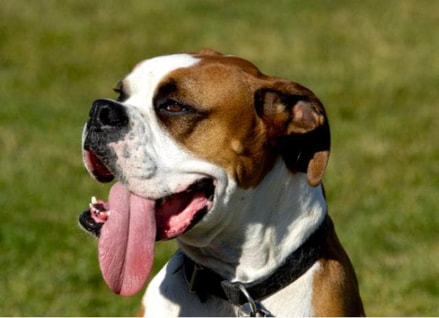 Although our pets sweat through their paw pads, it is not the primary way that they use water to help keep cool. The sweat on their paws is mostly used for traction on the floor. Dogs will pant when they are hot, which works because the water on their tongue evaporates, taking some of the heat with it. Some dogs are better at this than others, with brachycephalic (short nosed) breeds having a harder time panting and breathing in general. This would be your pugs, bulldogs, and boxers. Panting also helps get a larger amount of cooler air into the body system. Cats don't typically pant unless is is very hot, but they will groom themselves more in the summer. As they lick their fur to make it wet, the water evaporates, again taking some of the heat with it. If you see your cat panting, it is time to get them inside where it is cool and get them plenty of water, as that could indicate the potential for something worse to happen. The amount of variety with how our pets can stay cool is, well, pretty cool! Clinical signs of your pet in the heat can vary in severity and duration depending on what is happening, and they can be anywhere from a mild irritant to life threatening. That being said, prevention is every ounce more valuable than treatment, so do try to keep the heat in mind as you do your outdoor activities.  Heat Exhaustion (also known as heatstroke) is where your pet overheats after being in the sun or warm temperatures too long. Normal temperature ranges for cats and dogs vary from 100.5 to 102.5, where anything above 102.5 is considered higher than normal. Symptoms that are mild can progress to more severe issues quickly when heat is involved, so it is important to look out for mild symptoms and act on it quickly before it becomes a problem. Symptoms you may notice at first include:
If you recall, the blood vessels can dilate to help blood get to the surface of the body. The veins can also constrict to force blood to keep away from the skin to stay warm. When you dump really cold water on your pet, the veins constrict, keeping blood away from the skin, so they cannot cool down that way. The secondary problem with this is that it also causes the local blood pressure to rise, forcing the heart to pump harder to make up for the new resistance it is encountering. This can lead to cardiac arrest if a great enough area of dog is covered in cold water - full submersion would be worst case scenario here. To prevent this just use warmer water! Water that is cool but not cold will help mitigate the chances of shock and help keep your pet cooler without any risk. The process of evaporation works wonders over time, and the other measures you take will help your pet in the short term until it takes effect. 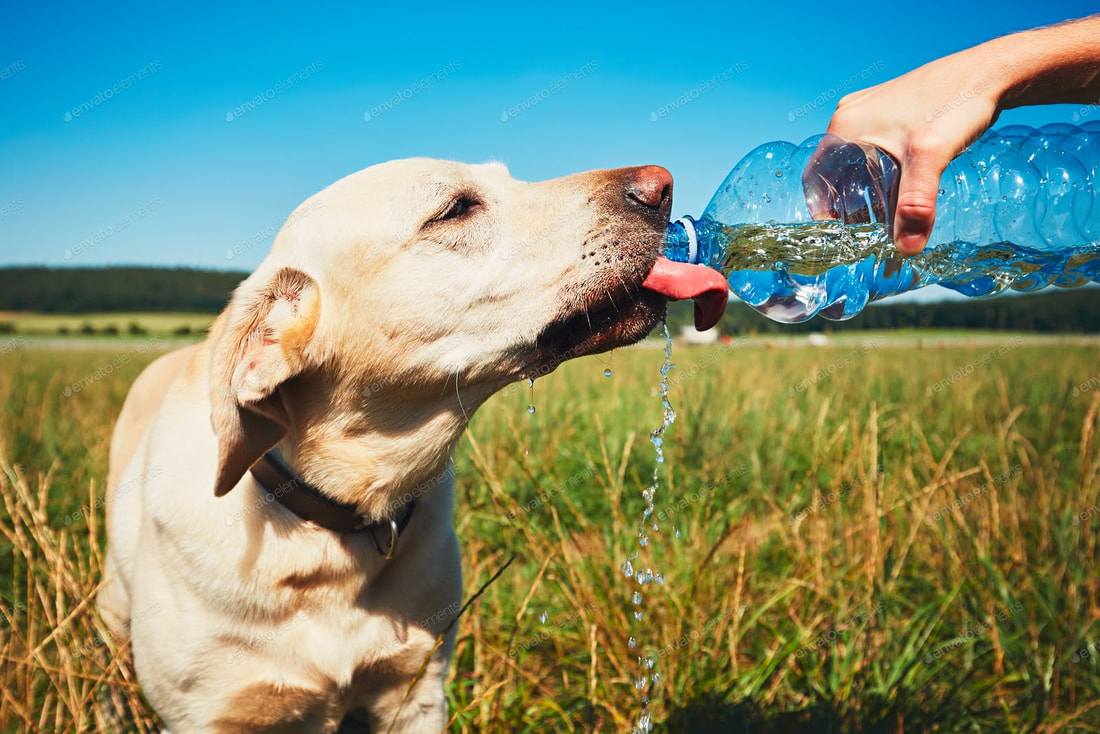 Speaking of water, dehydration is another problem that can happen with hot sunny days. Your pet could be dehydrated if:
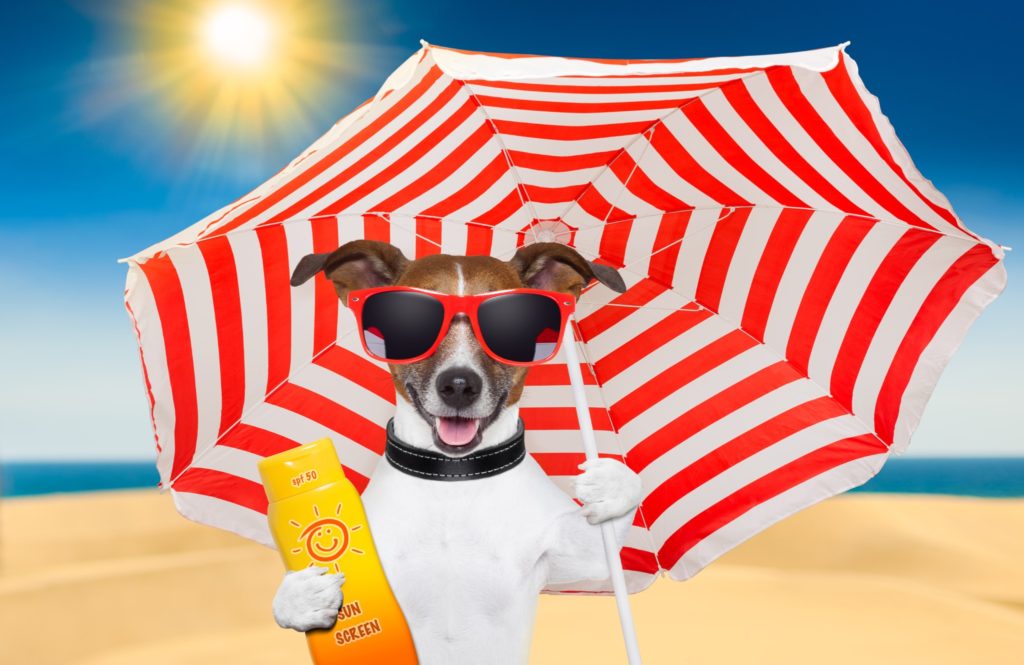 Something less common that could still happen is a sunburn on your pet. For dogs and cats this does not typically happen anywhere besides their nose, as they usually have enough fur to block out the sun. It is not a bad idea to use sunscreen safe for pets on their noses - this does not have hair protecting it, although a major problem with this is that the nose is awfully close to the tongue, and if they feel something on their nose they tend to lick it off. If your pet has short hair that is very thin, or no hair at all, like our sphinx cats, then sunscreen over the whole pet is definitely warranted. Again, make sure it is pet safe. If you don't have any on hand, you can use the sunscreen that is made for kids, as these typically have a decreased amount or no trace of harmful chemicals, such as oxybenzone. And of course, make sure you have a shady spot nearby.  One thing that summers and dry weather do is kick up weeds that have spines, needles, or hooks on them. While nature is effective in helping these plants get around, nothing is more frustrating to an owner (and us honestly) than a grass seed, foxtail, or many of the other names that basically mean "grass splinter that is embedded in pet". These typically get caught in the ears or between the toes of your pet, and cause irritation, swelling, infection, and constant itching. If you notice these signs at all, make an appointment with a veterinarian to have your pet looked at. These cases sometimes require sedation to remove the grass seed if it lodges itself in the body deep enough, so be prepared that this may be the case. The only way to avoid these is to stay away from tall grass and weeds, but this can be easier said than done. It is always helpful to know the signs and symptoms and act on it when appropriate. Hopefully this post was insightful on how to help your pets stay cool. The heat waves are not an environmental condition to take lightly, and so it becomes imperative that you are well prepared. When it feels too hot for you, it is likely too hot for your pet. Keeping shade and water nearby, and checking in with your pet to make sure that they are doing oaky is the best way to go about handling the heat. If at all possible, stay indoors at the hottest times of the day, usually between noon and 5:00 p.m. Preparedness saves you a lot of trouble later down the road, and it can't hurt to have an extra bottle of water on hand for your pet. Hopefully the heat waves abate soon, but in the meantime stay safe and use good judgement! Have a safe and wonderful summer!
0 Comments
Leave a Reply. |
Author:NOAH Staff Archives
April 2022
|
